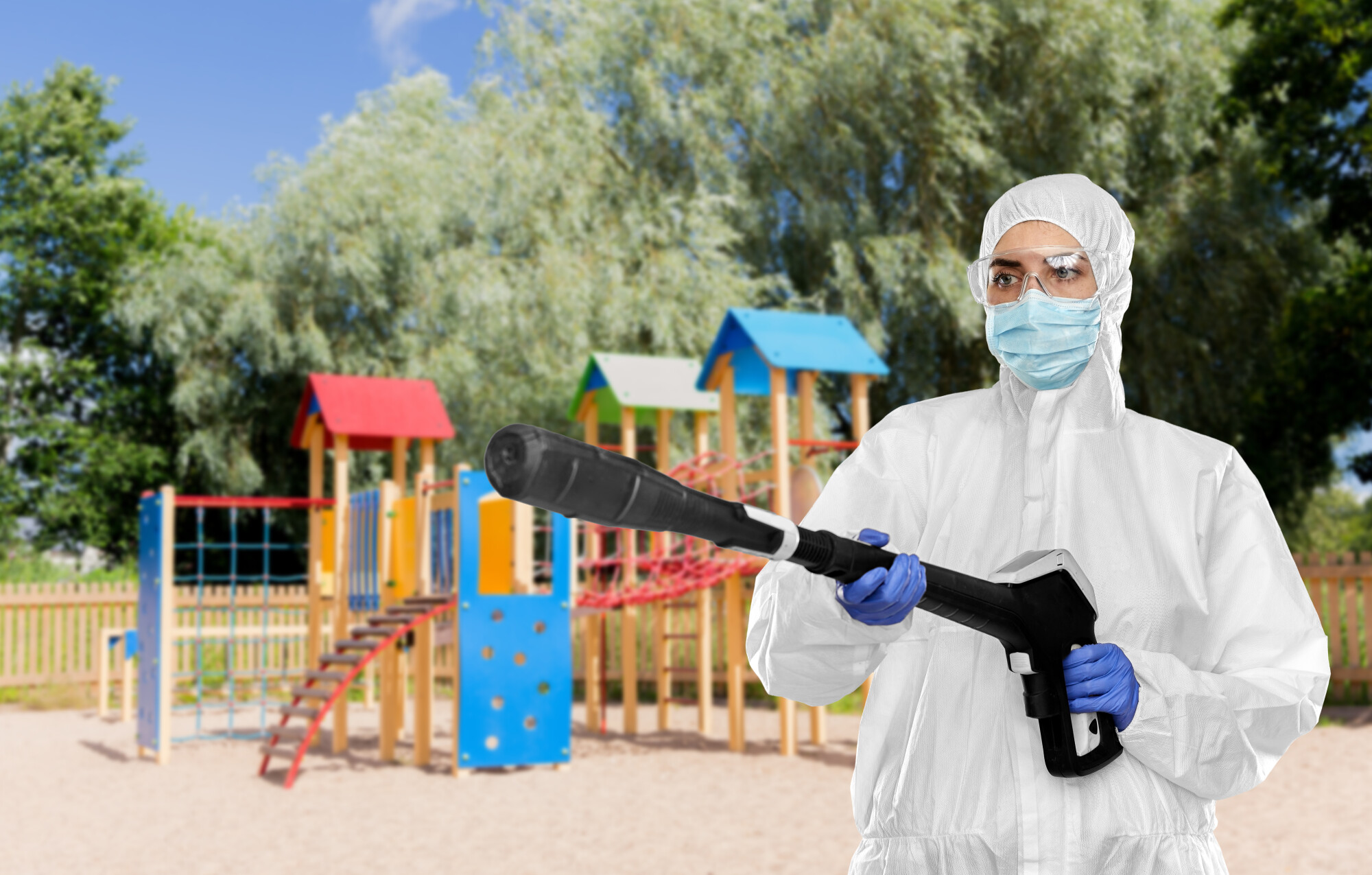There were three major oil spills that each released more than 700 tons of oil in 2022.
In addition to this, there were another four medium oil spills that each released between 7 and 700 tons of oil into the ocean. While the number of oil spills has decreased, it’s important to understand the procedure that needs to be followed when spills of any kind occur.
These rules and regulations don’t just apply to oil spills but are there for all kinds of hazmat spills. These reports should be understood and integrated into your company’s safety and security protocols. This will ensure that your company is always compliant even in the worst of circumstances.
Want to learn more about sill release reporting? Here’s a complete guide on how to report environmental emergencies.
What Constitutes an Environmental Violation?
An environmental violation is simply any activity that does not comply with environmental law or current regulations. This can include a variety of incidents such as:
- Smoke or emissions from factories
- Tampering with emission control systems
- Improper treatment or transportation of hazardous waste
- Unpermitted Industrial Activity
- Uncontrolled oil spills
- Chemical waste spills
- Improper transportation of chemicals
How Are Environmental Emergencies Dealt With?
Environmental emergencies are under the supervision of the National Response Center. This authority should be notified first so that they can provide assistance in any way possible.
The National Response Center has access to resources that smaller companies may not. This is why it’s so important to file an incident report with them as soon as possible. Telephonic incident reports should be immediate, followed by a more detailed incident report within 30 days.
Different Kinds of Environmental Emergencies
As mentioned above, there are a few different kinds of environmental emergencies that you should know about. These emergencies are all incredibly important and should be reported to the National Response Center as soon as possible.
Here’s a quick list of what would be deemed an environmental emergency.
- Hazmat Spill
- Oil Spill
- Radiation Emergencies
- Biological Discharges
How to Report Environmental Emergencies
It’s important to understand how to report environmental emergencies whenever they occur. Reporting incidents early is essential to help contain the spill and cooperate with the necessary authorities.
Reporting Emergencies
Reporting emergencies is essential to remain compliant with the various laws and regulations around hazardous materials. The procedure is incredibly simple and can be broken down into three simple steps. Here’s a quick walkthrough of these important steps:
Step 1: Call the National Response Center
The first step in the reporting process is to contact the National Response Center. The authorities will record the telephone conversation and will keep this as a telephonic incident report. The National Response Center is also a great source of information and guidance.
This means that they can help provide you with additional resources to help you contain the spill. All emergency situations should be reported to them immediately so that the spill can get contained quickly.
Step 2: Filing an Incident Report
The next step is to file an actual incident report with the National Response Center. Depending on where you are and the nature of your spill, you may be required to file additional incident reports. In some cases, you may need to file reports with ecological or state authorities.
Filing an incident report can be done online. This report will cover the entire incident and requires you to be incredibly accurate. This means that you will need to know the exact specifics of what and how much hazardous material was spilled.
An incident report should be filed as soon as possible. However, you do have 30 days after the incident to get all your information and documentation in order.
Step 3: Follow-Up Report
In some cases, a follow-up report may be required. These reports are generally due a year after the incident has occurred. The report outlines the entire incident along with more accurate information that you may have gathered after the spill.
If your company has made any notable findings, this can also be attached to the follow-up report.
Reporting Non-Emergencies
Even if the incident that you’re dealing with isn’t classified as an emergency, there are still reports that you should file. These reports will outline the nature of the spill along with spill quantities.
Local and State Officials
Local and state officials should always be kept in the loop. Notifying these officials is important when filing incident reports, but they can also help contain the spill. When it comes to uncontrolled spills, the help that they offer can save time by helping you contain the spill quicker.
Different Reports
There are a few different kinds of reports that you may need to file depending on the nature of the spill and your location. This is because various states have unique reporting requirements to help with different kinds of spills. There are also different authorities to report to depending on who’s affected most by the spill itself.
Here’s a quick look at how reporting works when they affect people, animals, or the environment.
Affecting People
Oil and other chemical spills that affect humans are the most serious incidents that you need to report. Pesticide spills should be reported to the National Pesticide Information Center. As with other spills, you should report the incident as soon as possible.
Affecting Pollinators
Bees and other pollinators are incredibly important to the environment. While many overlook them, chemical spills can have a major impact on the environment as a whole. These reports should be filed directly with the EPA or through the Ecological Pesticide Incident Reporting portal.
Affecting Domestic Animals
If hazmat spills could threaten the health and wellness of domestic animals, it’s important to file a report with the National Animal Poison Control Center. It’s important to do this quickly so that all pets and animals can get the medical attention that they need.
Affecting the Environment
The environment often pays the biggest price when it comes to chemical spills. While it’s important to do everything you can to prevent this, reporting to the necessary authorities quickly can save lives. The Wildlife Rehabilitation Center near you should be notified so that they can assist in any way possible.
Essential Reporting Tips
Reporting environmental emergencies is vital. Contacting the authorities will give you the support you need to handle the situation. However, there are a few reporting tips that your organization should always keep in mind.
These essential tips will ensure that reports are drafted and submitted accurately and on time. This will keep your entire organization compliant and prevent fines in the future.
Here’s a quick look at these essential reporting tips.
1. Contact the Authorities Quickly
Whether you’re dealing with an oil spill in the ocean or a chemical spill on the road, it’s important to contact the necessary authorities as soon as possible. When it comes to large-scale emergencies, the National Response Center should be your first call.
We understand that spills are not planned for and the situation can be incredibly stressful. This is why it’s important to have protocols in place to deal with these kinds of situations.
The first step in your protocol should be to contact the National Response Center. While this will report the incident telephonically, they will also be there to help you contain the spill. Even if you have the entire spill under control, there may still be ways the National Response Center can help.
This is why you should always call them quickly after the incident takes place. They will also help guide you on the next steps that you need to take to report the incident formally. This way, you can rest assured that you’re following the law and local regulations perfectly.
2. Check your SDS for Specific Details
The primary priority should be to contain the spill. If you’re a company that regularly deals with hazardous materials, you can implement your safety protocols to ensure that the spill is contained. Once the spill is contained, you can proceed to pull together information about the spill.
In some cases, you may need to get this information to understand the nature of the spill. This information should be available to you on your SDS. If you have an online SDS, this can make your life easier.
Online SDS systems will let you access your information wherever you are in the world. This means that you can get access to your company data in the blink of an eye. This information will help you understand the spill and could play a key role in containing it.
Even if the spill is fully contained, you will need this information for specific details. These details will then be used in your incident report. It’s important to be as accurate as you can with these reports.
Having an online SDS allows you to access accurate information even if you’re busy out in the field.
3. File Your Incident Report That Day
When you call the National Response Center, a telephonic incident report will be made. However, this is not the only report that you are going to have to file. After the date of the incident, you have 30 days to file a complete report on the entire incident.
This will give you some time to gather the necessary information that you need for the report. However, it’s always a good idea to file this report as soon as you can. Reporting early can help improve your cooperation with authorities and showcase the capabilities of your company.
If you have an online SDS, gathering essential information is easy. All the data that you need is available online, so you can draft your report with accurate information even if you’re across the country.
While it may be difficult, try to gather your information and file your incident report that day. This speeds up the entire evaluation process and allows you to start your own internal investigations.
4. Conduct Internal Investigations
Many companies think that EPA reports are all they need to do in order to move on from a spill. While it’s important to report spills to the necessary authorities, you should also conduct your own internal investigations.
An internal review will give you essential information about your company and what went wrong. This will allow you to spot mistakes and create new solutions. Investing in an internal audit like this will ensure that these mistakes never happen again.
5. Use Findings to Make Changes
Once you have completed your own internal investigations, you can use this new information to make changes. These changes can be tiny or company-wide. Either way, making changes shows the public how your company learns and adapts over time.
This is a great way to regain public trust. In addition to this, your company will operate safer and more efficiently. This could even lead to a monetary gain for your company in the long run.
Invest In an Online SDS Today
Hazmat spills can occur from time to time, but it’s essential that you stay prepared and know exactly what to do. The National Response Center is the first authority that you should call in an emergency situation. However, it’s important to gather as much information as you can for your incident report.
This is why it’s so beneficial to have an online SDS. This system will help keep track of all your chemicals and hazardous materials. In this way, you’ll have access to the information you need for the report.
Contact us today to learn more.


